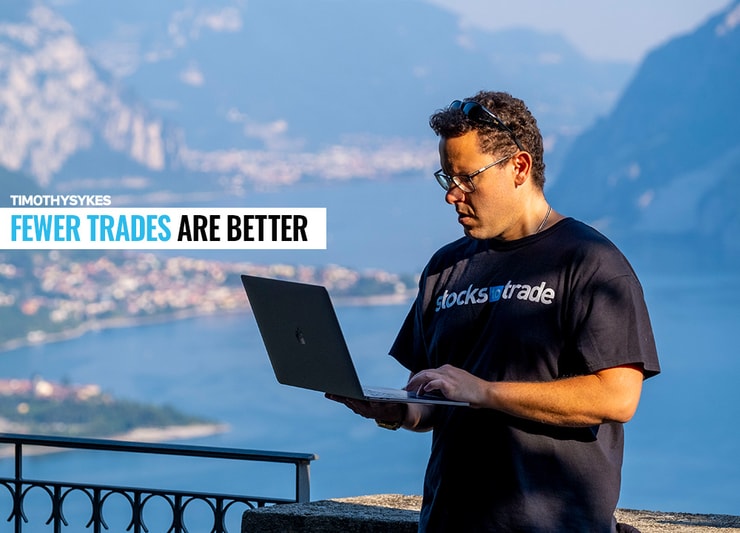When people hear the words “day trader,” they conjure up images of someone in a dark room, squinting at a dozen screens.
Problem is that’s not what it’s like at all.
This is what my trading world looks like…
Yes, I’ve traded from Dubai, in a pool, with a laptop.
Every student from my Millionaire Challenge that crossed the six-figure threshold didn’t do it through quantity.
Greed pushes people into bad setups instead of waiting for good ones.
Some feel they need to make up for years of missing out by hitting as many winners as possible.
Most of us struggled to accept that taking fewer trades of higher quality would get us to our goals the fastest.
So, I want to show you some simple math that PROVES why fewer traders are better.
Next time you feel like you’re about to overtrade, pull up this article and remind yourself that patience pays.
Three Numbers That Matter

Everyone’s success can be analyzed with three numbers:
- Win rate
- Average win
- Average loss
There’s a concept in statistics known as Expected Value.
Simply put, the expected value is what you should make on a trade given the three inputs above on average if you repeated the trade over and over.
Here’s a simple example.
I flip a coin that pays $1 for every win and costs me $1 for every loss.
Sure, I can make or lose money from time to time. But on average, if I keep flipping the coin, I’ll break even.
The formula for expected value is as follows:
EV = (Win rate% x Avg. Win) – ( (1 – Win rate%) x Avg. Loss)
Let’s use some numbers from my performance in Profitly.
Based on thousands of trades, I come up with the following:
- Win rate = 76.95%
- Average win = $1,625.25
- Average loss = $1,123.14
Using these numbers, my expected value is:
EV = (76.95% x $1,625.25) – (23.05% x $1,123.14) = $1250.63 – $258.88 = $991.75
In percentage terms, my expected value is 1.37%.
Part of why I’m successful is I achieve three things at once:
- High win rate
- Large average win
- Low average loss
In trading, that’s having your cake and eating it too.
Now, this isn’t something I achieved overnight. I got here through years of study and practice.
But here’s how you can make life easier for yourself.
Quality Over Quantity

Let’s start with Trader Joe barely turns a profit.
Joe wins 50% of his trades on average. He makes $101 on wins and gives back $100 on losses.
So, Joe’s expected value:
EV = (50% x $101) – (50% x $100) = $50.5 – $50 = $0.50
Joe trades every day to achieve those stats.
Looking at his trading log, Joe discovers that he does better on Fridays.
In fact, if Joe only traded on Fridays, he would achieve a 60% win rate and make $110, with losses still costing him $100.
All of a sudden, his expected value jumps to:
EV = (60% x $110) – (40% x $100) = $66 – $40 = $26
Joe’s trades Monday through Thursday may be profitable. But they don’t achieve the same success as only trading on Friday.
This same concept can be applied to waiting for better entries.
Joe might find that he still wins 50% of the time by waiting for a better entry. But all of a sudden, his potential profits jump to $110 while his potential losses drop to $90.
Getting to Your Goals Faster

Here’s the big reason why you have fewer trades of higher quality: drawdown.
Everyone takes a hit. That’s part of the game.
But if you wait for better entries or until you have a higher chance of winning, you statistically reduce the odds and size of your drawdown.
That’s huge for a trader trying to build an account.
Imagine an account that loses 5% vs. 25%. One is much easier to recover from than the other.
This is precisely why I tell my students to cut losses quickly.
I want them to keep their drawdowns as small as possible.
Because ultimately, if you can manage your losses and start to win fairly consistently, you’ll find your account will grow over time.
—Tim



Leave a reply